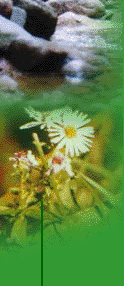|
Putting -
Stroke Mechanics:
Observe
the above photos. Notice the golfer maintains an upside down triangular shape with both shoulders forming the base of the
triangle, the forearms forming the sides of the triangle, and the wrists and fingers forming the pointed top of the triangle.
The golfer keeps her wrists and elbows relatively locked, moving at the shoulders only, which helps maintain the triangular
shape. A pendulum motion of the club is utilized during the stroke. The pendulum motion means the club should be swung the
same length back (prior to contact) and the same length through (after contact).
|
|
Practice your putting mechanics following the skill cues provided below. Have a family
member or friend check off each skill cue for each trial/stroke attempt. If you are by yourself, use a full length mirror
like I did during Ms. Bongiovanni's golf unit!
Stroke Mechanic Skill Cues
|
|
|
|
|
|
|
|
|
|
|
|
|
2. Wrists and Elbows Locked, Shoulder Movements Only
|
|
|
|
|
|
3. Pendulum (same length back & through)
|
|
|
|
|
|
4. All Skill Cues Combined!
|
|
|
|
|
|
When would you putt and what is the purpose?
When golfing, the first stroke often begins with a drive shot, followed by a chip shot then
a putt as the ball approaches the golf hole. Different clubs and strokes are used depending on the distance of the golf
ball from the golf hole. When the golf ball is on the putting green (the shortest, often most well-groomed grass
surrounding the golf hole), a putting stroke is used. With a putt, the golf ball stays on the ground along the green.
When putting, the goal of the golfer is to accurately aim the ball into the golf hole, finishing out the hole.
"Perfect practice makes perfect
play!"
|




